
Vorticism was a London-based modernist art movement formed in 1914 by the writer and artist Wyndham Lewis. The movement was partially inspired by Cubism and was introduced to the public by means of the publication of the Vorticist manifesto in Blast magazine. Familiar forms of representational art were rejected in favour of a geometric style that tended towards a hard-edged abstraction. Lewis proved unable to harness the talents of his disparate group of avant-garde artists; however, for a brief period Vorticism proved to be an exciting intervention and an artistic riposte to Marinetti's Futurism and the post-impressionism of Roger Fry's Omega Workshops.
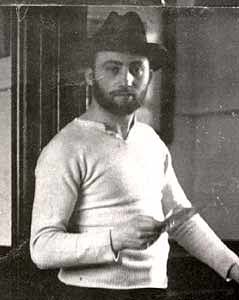
David Garshen Bomberg was a British painter, and one of the Whitechapel Boys.

Utagawa Hiroshige, born Andō Tokutarō, was a Japanese ukiyo-e artist, considered the last great master of that tradition.
The Fifty-Three Stations of the Tōkaidō, in the Hōeidō edition (1833–1834), is a series of ukiyo-e woodcut prints created by Utagawa Hiroshige after his first travel along the Tōkaidō in 1832.
Rita Donagh is a British artist, known for her realistic paintings and painstaking draughtsmanship.

The Daiwa Anglo-Japanese Foundation is a United Kingdom-based charity established in 1988 to support closer links between Britain and Japan. It was founded with a benefaction from Daiwa Securities Co Ltd.

The Tōkaidō road, which roughly means "eastern sea route," was the most important of the Five Routes of the Edo period in Japan, connecting Kyoto to Edo. Unlike the inland and less heavily travelled Nakasendō, the Tōkaidō travelled along the sea coast of eastern Honshū, hence the route's name.
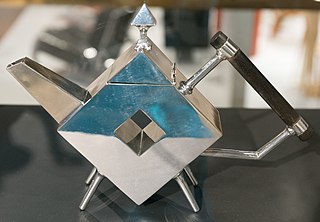
The Anglo-Japanese style developed in the United Kingdom through the Victorian period and early Edwardian period from approximately 1851 to the 1910s, when a new appreciation for Japanese design and culture influenced how designers and craftspeople made British art, especially the decorative arts and architecture of England, covering a vast array of art objects including ceramics, furniture and interior design. Important centres for design included London and Glasgow.
Helen McCarthy is the British author of such anime reference books as 500 Manga Heroes and Villains, Anime!, The Anime Movie Guide and Hayao Miyazaki: Master of Japanese Animation. She is the co-author of The Erotic Anime Movie Guide and the exhaustive The Anime Encyclopedia with Jonathan Clements. She also designs needlework and textile art.

Russian Ballet is an artist's book by the English artist David Bomberg published in 1919. The work describes the impact of seeing a performance of Diaghilev's Ballets Russes, and is based on a series of drawings Bomberg had done around 1914, while associated with the Vorticist group of avant-garde artists in London. Centred on Wyndham Lewis and Ezra Pound, the movement flourished briefly 1914–1915, before being dispersed by the impact of the First World War. The only surviving example of a vorticist artist's book, the work can be seen as a parody of Marinetti's seminal futurist book Zang Tumb Tumb, using similar language to the Italian's work glorifying war, but instead praising the impact of watching the decidedly less macho Ballets Russes in full flow.
Bomberg was the most audacious painter of his generation at the Slade, proving ... that he could absorb the most experimental European ideas, fuse these with Jewish influences and come up with a robust alternative of his own. His treatment of the human figure, in terms of angular, clear-cut forms charged with enormous energy, reveals his determination to bring about a drastic renewal in British painting. —Richard Cork
Miles Peter Richmond was a British artist.
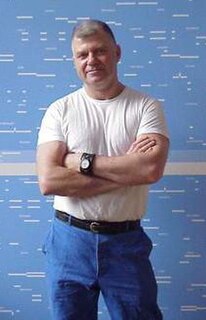
Keith Milow is a British artist. He grew up in Baldock, Hertfordshire, and lived in New York City (1980–2002) and Amsterdam (2002–2014), now lives in London. He is an abstract sculptor, painter and printmaker. His work has been characterised as architectural, monumental, procedural, enigmatic and poetical.

Dennis Creffield was a British artist with work owned by major British and worldwide art collections, including the Tate Gallery, The British Museum, Arts Council of England, the Government Art Collection, The Los Angeles County Museum of Art, Leeds City Art Gallery, University of Leeds collection, Williams College Museum of Art, University of Brighton collection, Swindon Art Gallery collection and others.

Japonaiserie was the term used by Dutch post-impressionist painter Vincent van Gogh to express the influence of Japanese art on his works.
Christopher Cook is a British painter known for works since 1998 in graphite powder and resin, which have been exhibited in, and collected by, several major museums, predominantly in the USA.

Mario Dubsky was an artist born in London to Viennese Jewish parents who had converted to Christianity.

Carl Randall is a British figurative painter, whose work is based on images of modern Japan and London.

Lilian Thirza Charlotte Holt (1898–1983) was a British artist, also known by her married name, Bomberg. She was a founding member of the Borough Group. Her dedication to her partner and family limited her career and opportunities as an artist.
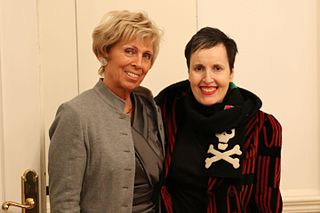
Frances Aviva Blane, born Frances Aviva Sternberg , is an English abstract painter who works in the Expressionist tradition. Her subject matter is the disintegration of paint and personality. Blane also draws. However, whereas her paintings are mainly non-referential, the drawings are often of heads, although, as in her paintings, the "heads" are deconstructed which echo her words "broken-up paint, broken-up heads". In 2014, her drawings were shown in an exhibition entitled Deconstruct at De Queeste Kunstkamers, Belgium. She has exhibited in Britain, Europe, Australia and Japan.
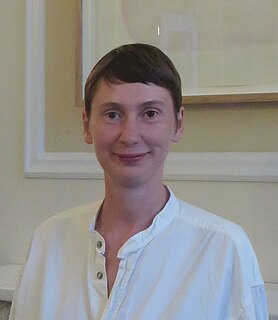
Kate Groobey is a British artist based in South Yorkshire and the South of France.














